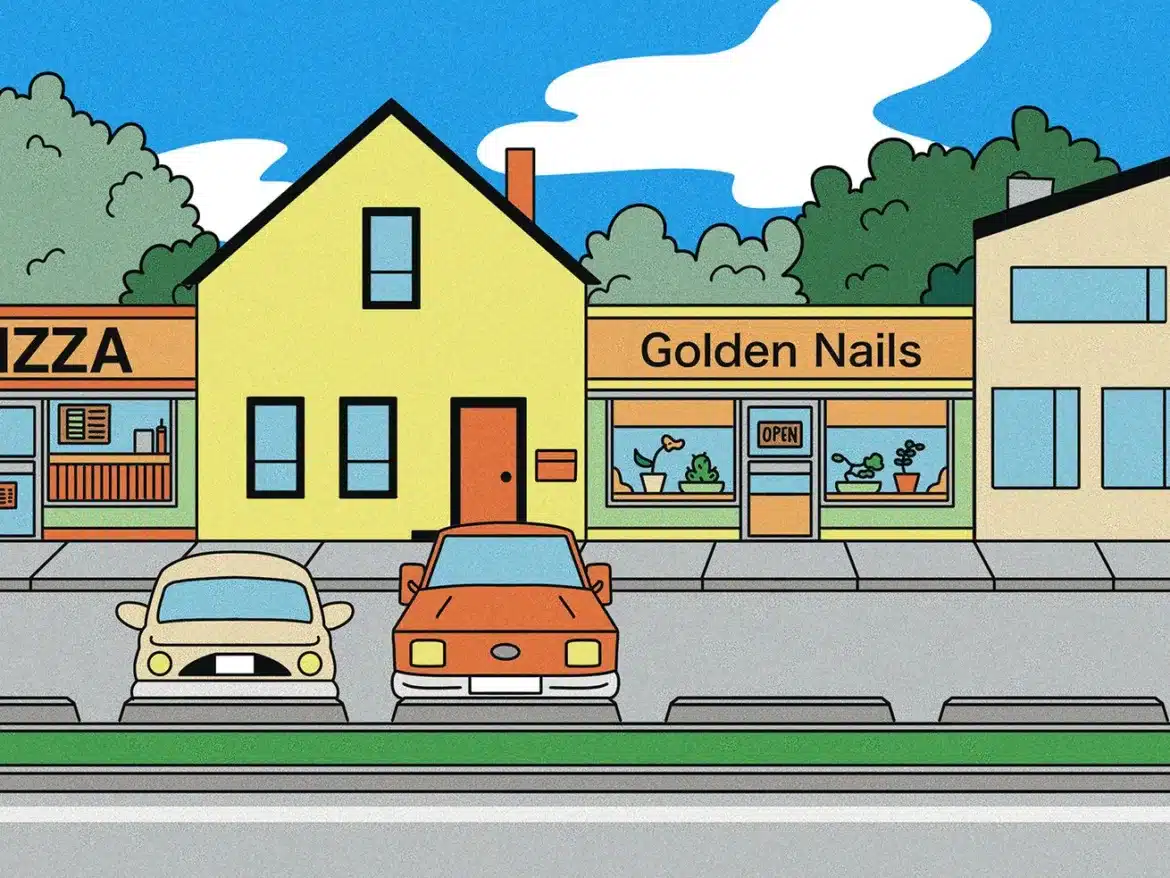America is full of abandoned malls. What if we turned them into housing?
Amy Casciani, a longtime real estate developer whose corporation built housing across seven states, watched her local community struggle for years to add new homes.
Casciani grew up in upstate New York, in a suburban town outside Rochester. She eventually started a family and raised her children there, and in the early 1990s, a new mall opened up, bringing over 100 new stores including anchor retailers like Sibley’s, J.C. Penney, and Sears.
The mall was a proud boon to the town of Irondequoit, and a go-to spot for teenagers to hang out. “Hands down the most attractive shopping mall in the area,” an editorial for a newspaper serving Albany declared. “From its blue Legolike entrances and splashing fountain to its light-trimmed glass roof, columns and carousel, the mall exudes carnival gaiety.”
But in a few short years, retail patterns across the United States began to change. Mall foot traffic slowed and online shopping ticked up. Stores in the Irondequoit Mall began to close, and by 2016, the last major anchor, Sears, called it quits.
Casciani ached for her town, which not only was dealing with the eyesore of the abandoned mall but also lacked enough vacant land to develop desperately needed affordable housing. Her nonprofit development group, PathStone, embarked on a complex but meaningful project: They retrofitted the Sears department store into 73 rental apartments and built a new four-story multifamily building with 84 rental units on the adjacent parking lot.
PathStone connected the two buildings by a raised pedestrian walkway, and the Skyview Park Apartments now serves adults 55 and up who need subsidized housing. Half of the units are reserved for seniors at risk of homelessness, who can receive on-site supportive services.
/cdn.vox-cdn.com/uploads/chorus_asset/file/25320988/Don_Cochran_01004922.jpg)
Don Cochran
“As affordable housing needs and costs keep going up and a shortage of available vacant land is growing, why not use what we already have?” Casciani said. “Why not creatively turn it around from being a blight on the community to an asset?”
Across the country, policymakers, researchers, and real estate developers are paying more attention to mall conversions like the one in Irondequoit as they grapple with their own shortage of affordable housing. While the Irondequoit Mall was a traditional mall, strip malls in particular offer some unique advantages, like big empty parking lots, that could make housing redevelopment an easier task.
A report last fall from Enterprise Community Partners, a national nonprofit focused on increasing housing supply, estimated that strip mall conversions could create more than 700,000 new homes across the United States.
In 2022, California lawmakers passed a statewide law to help facilitate the conversion of empty commercial buildings to housing, with supporters cheering the law’s potential to “unlock” tons of previously unavailable land.
The Biden administration is also excited about the possibility of converting more vacant strip malls into housing, and in October, released new federal guidance to help leaders and developers navigate the unfortunately complex financing process.
“It’s not going to be a panacea,” said one senior official who works on the White House’s housing policy and was not authorized to speak publicly. “But it could have a range of self-reinforcing benefits for community and economic development, housing and employment.”
The biggest barrier to strip mall conversions is zoning
An old mall on a 23-acre plot of land in a town about 10 miles northwest of Boston was in obvious decline. When a developer bought the property for $44 million in 2017, two-thirds of the retail spaces were vacant. By 2021, new apartments were ready to rent on the property, and today the Woburn Village has 350 rental units, amenities like a fitness center and a swimming pool, and retailers that include Sephora and Panera.
/cdn.vox-cdn.com/uploads/chorus_asset/file/25320945/Woburn_Village_Tavern__100123_085__2_.png)
Photo courtesy of EDENS
Turning the struggling Woburn Mall into the bustling Woburn Village has been hailed as a great success, but what has made conversions like it so rare is that local zoning laws often preclude them. Many communities have laws barring homes and businesses from coexisting on the same parcel.
“Perhaps most often, the primary barrier toward redevelopment is regulatory,” concluded a report from the Metropolitan Area Planning Council (MAPC), which serves 101 cities and towns in the Boston region.
The MAPC analyzed the potential for more strip mall conversions across the Greater Boston area and found over 3,000 strip malls sitting on thousands of acres of land. If just the top 10 percent of those candidates were converted into mixed-use development, the planning agency said, more than 125,000 new housing units could be built.
Enterprise Community Partners replicated this analysis to get its estimate of creating over 700,000 new homes nationally by repurposing strip malls, including 300,000 “lower-density” multifamily housing units (such as duplexes, triplexes, and townhouses), and over 400,000 “medium-density” housing units (defined as a property with up to six stories and an average unit size of 1,100 square feet).
/cdn.vox-cdn.com/uploads/chorus_asset/file/25320962/03_WoburnMovies_Dominick__1_.jpg)
Photo courtesy of EDENS
Across the US, there is 947.5 million square feet of strip mall space, according to the International Council of Shopping Centers. “We just looked at the 10 percent that were most well-suited for conversion based on factors like parcel size, proximity to transit, conditions, and vacancy, but it could be much more than that if you changed some of those assumptions,” said Ahmad Abu-Khalaf, a senior research analyst who wrote the Enterprise report.
Like the Metropolitan Area Planning Council, Abu-Khalaf sees rewriting local zoning laws as the biggest barrier to conversions, which is why California authorizing retrofits statewide two years ago was such a big deal. This summer, a California state agency that oversees building code regulations went a step further and voted to make it even easier for developers to convert commercial property into new housing.
States could follow California’s example or pass alternative incentives that encourage local cities to update their zoning rules.
The idea is spreading
Following the pandemic and the growth of remote work, policymakers grew more interested in converting empty office buildings into housing, especially those located in dense, urban areas. But such conversions have often been harder and more expensive than leaders originally envisioned.
Strip malls, on the other hand, offer some unique opportunities. As Abu-Khalaf noted, many strip malls nationwide are already more than seven decades old and need long-backlogged repairs. The maintenance cost for these older buildings is often more expensive than the cost of just demolishing them and rebuilding.
Strip malls are also typically built on property that includes large amounts of surface parking, which can make it easier for developers to build new projects. In Atlanta, for example, a shopping center that opened in the 1960s was bulldozed last year to make way for nearly 700 new housing units, including townhomes and multifamily apartments.
The senior housing official said converting strip malls could be particularly important as the nation’s housing crisis has spread out beyond just high-cost cities. Today, workers and families struggle to find housing near jobs even in suburban and rural areas, and many strip malls are located in the suburbs.
In 2023, the Biden administration opened up more funding for such housing conversions and directed agencies like the Department of Housing and Urban Development to prioritize these types of requests. The General Services Administration, which helps manage and support federal agencies, also put out new guidance emphasizing which federal properties could potentially be redeveloped into new housing. Since October, according to the White House, more real estate developers have expressed interest in tapping into these resources and technical assistance for new projects.
“This is not an easy development to accomplish, but I believe it’s a necessary one to accomplish,” Casciani, the real estate developer from New York, told me. “I think it can make an even bigger impact on communities than new construction.”



